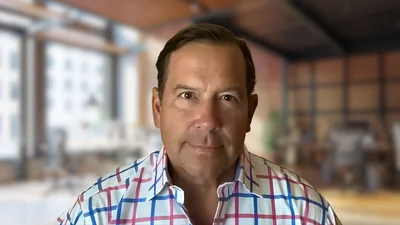Brad Close President | National Federation of Independent Business
Brad Close President | National Federation of Independent Business
The National Federation of Independent Business (NFIB) reported that its Small Business Optimism Index fell by 2.0 points in September to 98.8, marking the first decline in three months. Despite the drop, the index remains above its 52-year average of 98. The Uncertainty Index increased by 7 points to 100, the fourth-highest level recorded in over five decades.
“Optimism among small business owners decreased in September,” said NFIB Chief Economist Bill Dunkelberg. “While most owners evaluate their own business as currently healthy, they are having to manage rising inflationary pressures, slower sales expectations, and ongoing labor market challenges. Although uncertainty is high, small business owners remain resilient as they seek to better understand how policy changes will impact their operations.”
NFIB Illinois State Director Noah Finley commented on the local impact: “Market uncertainty continues to hamper Main Street growth. As Illinois legislators return to Springfield for the fall veto session, small businesses are worried about tax-increase proposals and the ongoing high energy costs that are dragging down Illinois’ Main Street businesses.”
The report highlighted several challenges facing small business owners. Supply chain disruptions and inflation were noted as significant issues. The percentage of owners raising average selling prices increased by 3 points from August to a net 24% (seasonally adjusted), while 31% plan to increase prices over the next three months, up 5 points from August. Fourteen percent of owners identified inflation as their most important problem, a 3-point rise from August.
In September, 64% of small business owners reported some degree of supply chain disruption, an increase of 10 points from August. Inventory concerns also grew, with a net negative 7% viewing current inventory stocks as too low—a record monthly decline for the survey.
There was some positive news regarding earnings; the net percent of owners reporting higher profits increased by three points in September, reaching its highest level since December 2021. However, expectations for better business conditions dropped by 11 points to a net negative 23%.
Labor quality remained a concern for many business owners. Eighteen percent cited it as their top issue in September, tying with taxes and representing a decrease of three points from August. According to NFIB’s monthly jobs report, a seasonally adjusted 32% of all small business owners had job openings they could not fill in September—the same rate as August. Of those hiring or trying to hire (58%), 88% reported few or no qualified applicants.
A net 16% (seasonally adjusted) plan to create new jobs in the next three months—up one point from August and marking four consecutive months of increases. Labor costs were also cited more frequently as a primary concern, rising by three points from August to 11%. A net 31% reported raising compensation (up two points), while a net 19% plan further increases in the coming quarter.
Capital investment activity remained steady; fifty-six percent reported capital outlays over the past six months with expenditures on equipment (42%), vehicles (22%), facility improvements or expansions (14%), fixtures and furniture (11%), and buildings or land (5%). Plans for future capital outlays remained unchanged at a historically weak level.
Sales trends showed mixed results: more firms reported declining sales than gains, but there was a slight improvement compared to August. Expectations for higher real sales volumes fell by four points to a net eight percent.
Reports of inventory gains rose slightly but remained negative overall. Price increases continued above historical averages; unadjusted figures showed that one-third of owners raised average selling prices.
Profit trend reports improved modestly compared with previous months but still reflected challenges: among those reporting lower profits, weaker sales and rising material costs were common reasons; among those with higher profits, increased sales volume was most often credited.
Accessing loans became more difficult for some owners—a net seven percent found their last loan harder to obtain than before—and interest rates paid rose slightly.
Business health assessments were largely stable: eleven percent rated their business health as excellent (down three points), while fifty-seven percent said good (up three). Most other responses held steady.
Only eleven percent felt it was currently a good time to expand their business—a relatively weak sentiment historically.
Taxes tied with labor quality as the top problem identified by small business owners at eighteen percent each. Fewer respondents cited government regulations or red tape compared with previous months.
Other concerns such as poor sales, competition from large businesses, insurance costs, financing availability and interest rates saw little change from August levels.
The NFIB Research Center has been collecting Small Business Economic Trends data through quarterly surveys since late 1973 and monthly surveys since 1986 using randomly selected members. The latest survey was conducted in September 2025 and is released monthly on the second Tuesday.





 Alerts Sign-up
Alerts Sign-up